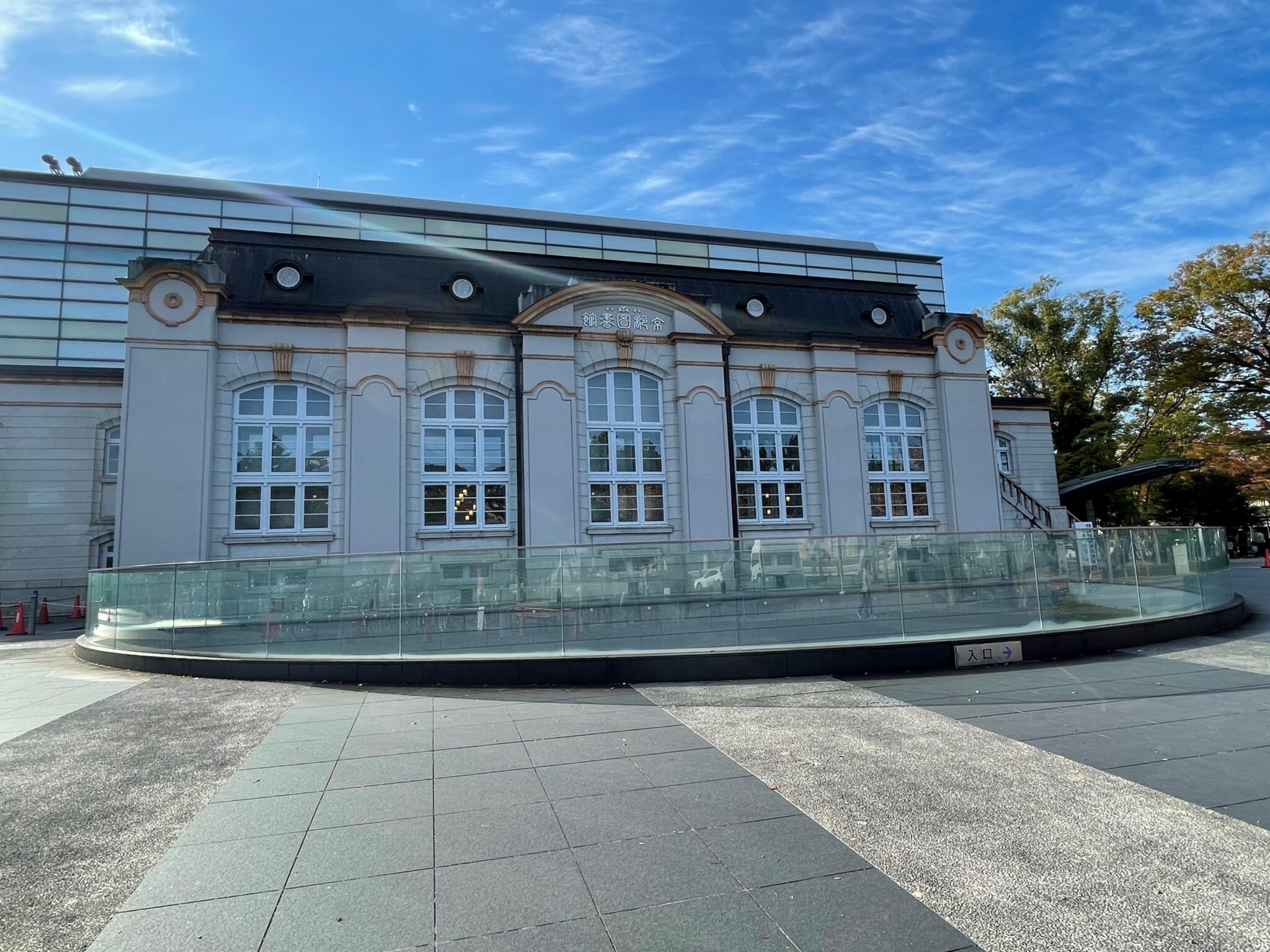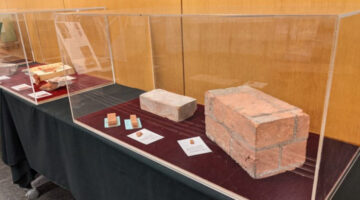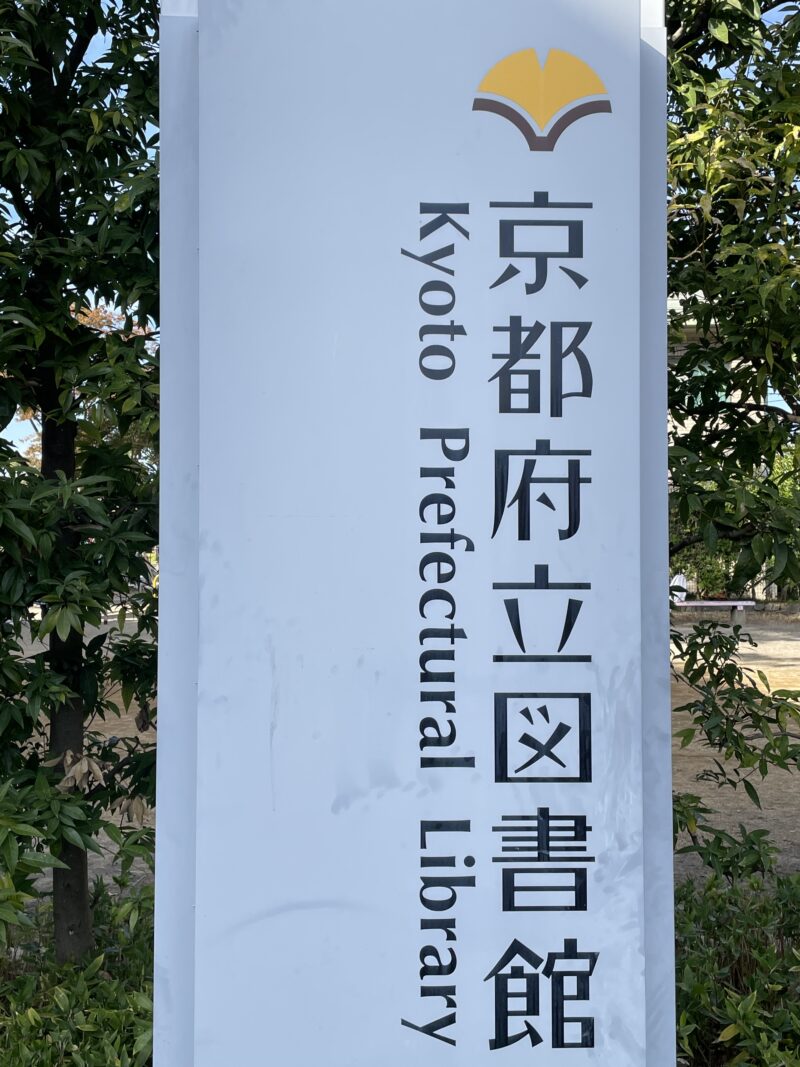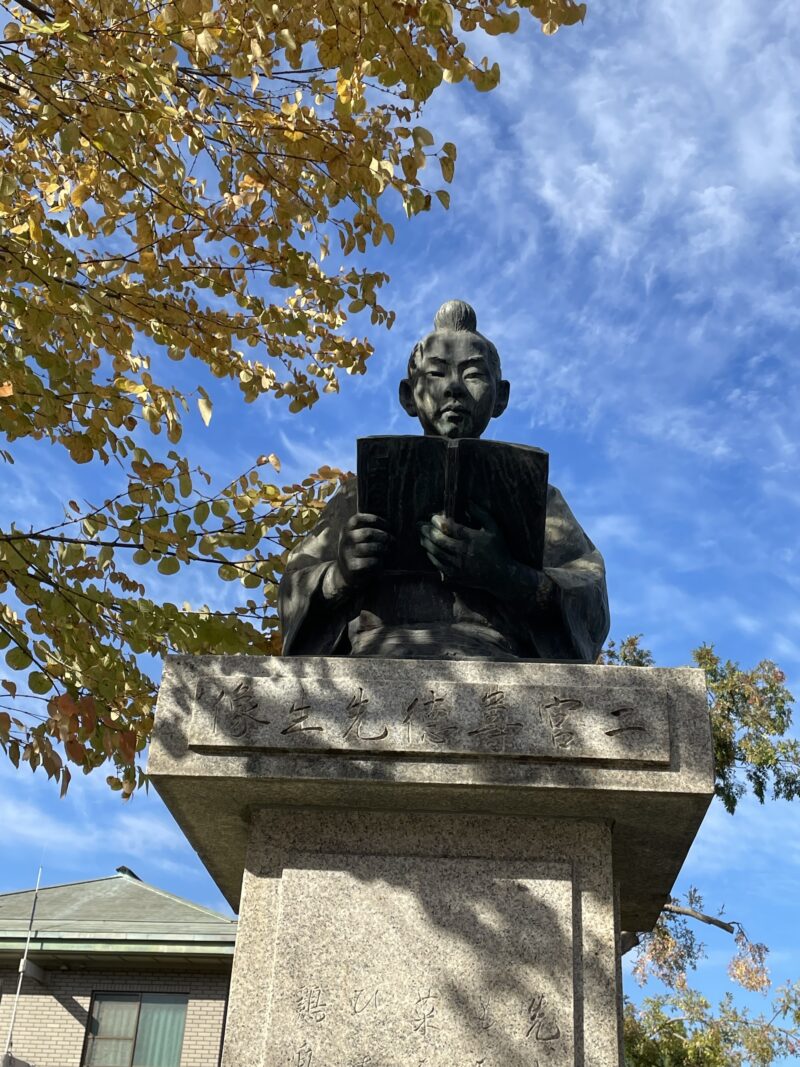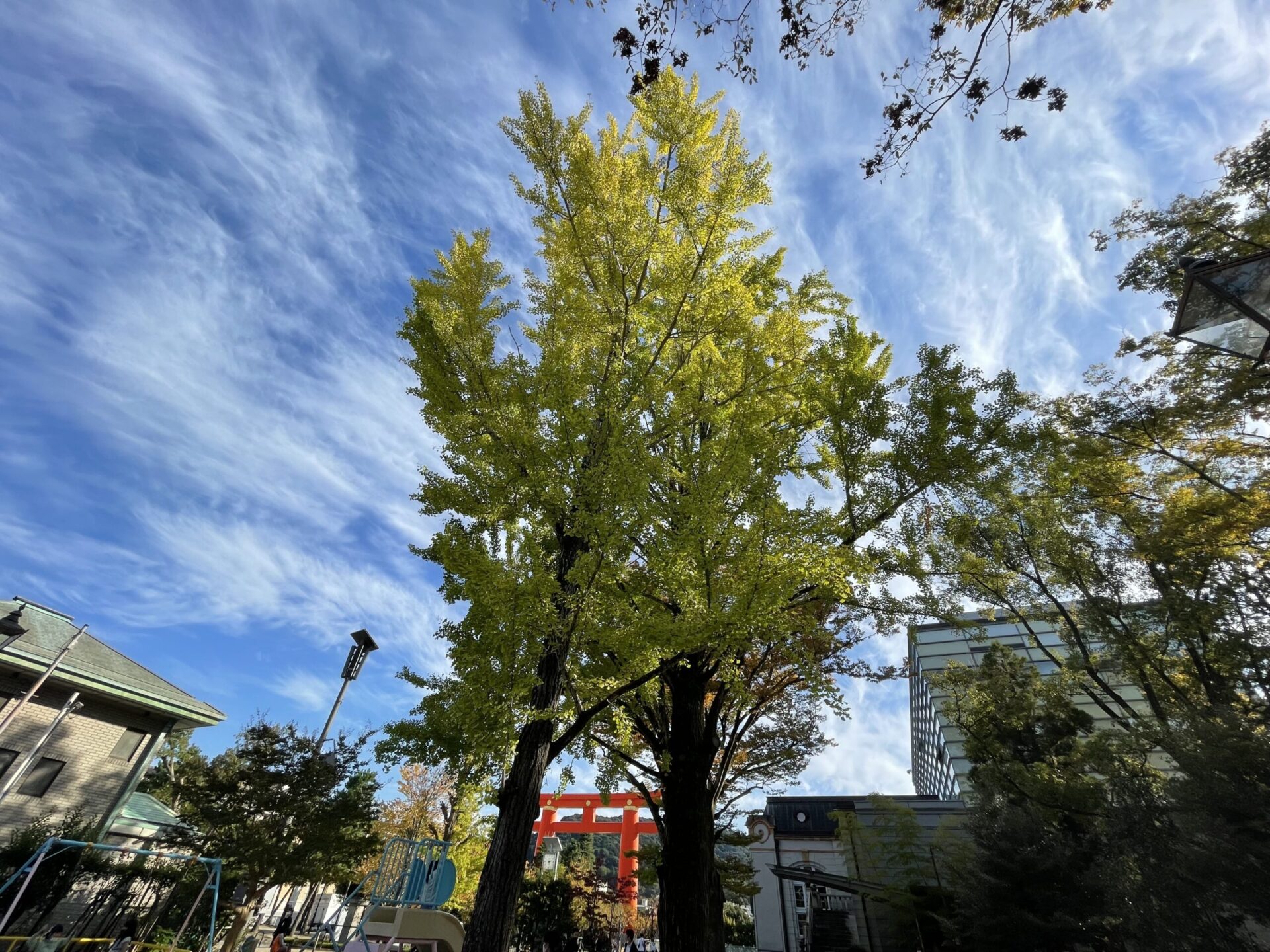I planned to go to see the autumn leaves at the “Sanmon” of Nanzenji Temple and the “Suirokaku” reminiscent of the ancient Roman aqueduct, and got off the city bus at Jingu Road in Okazaki. I was going to walk to Nanzenji Temple, but I went into the Kyoto Prefectural Library and got absorbed in reading, and this was the end of my schedule for today.
Twenty years have passed since the Kyoto Prefectural Library was renovated, and the entrance was lined with exhibits on the theme of “bricks” used in the old building.
Speaking of which, I remembered that the architect “Goichi Takeda” designed the old building, and I read related materials and books.
Kyoto Prefectural Library
The Kyoto Prefectural Library opened in Okazaki in April 1909 (Meiji 42). The architect is Goichi Takeda, who is said to be the “father of the Kansai architectural world” who founded the design department of the “current Kyoto Institute of Technology” and the “current Kyoto University” and the Department of Architecture of the Industrial Department at “now Kyoto University”, and is one of Japan’s leading architects.
At the time of its completion, the Kyoto Prefectural Library consisted of a three-story brick reading room and a four-story wooden stack, and also functioned as a museum. And because the main building was severely damaged by the Great Hanshin-Awaji Earthquake in January 1995 (Heisei 7), it was renovated over a period of about two years from November 1998 (Heisei 10) to October 2000 (Heisei 12).
At the time of the renovation, what was left was the façade facing Jingu Street, which was the work of the designer “Goichi Takeda” at that time.
Architect “Goichi Takeda”
“Goichi Takeda” was born on November 15, 1972 (Meiji 5) in Fukuyama Domain (present-day Fukuyama City, Hiroshima Prefecture), entered the Department of Home Architecture at Imperial University (now the University of Tokyo) in 1894 (Meiji 27), and graduated in 1897 (Meiji 30). His graduation thesis was “Tea Room Design”. The graduation design of the “ACADEMY OF MUSIC CONCERT HALL” is designed in the style of Queen Anne in the United Kingdom, and there is some overlap with the Kyoto Prefectural Library.
The Queen Anne style is a style of architectural and furniture decoration that was popular in England in the early 18th century during the reign of Queen Anne. In architecture, symmetrical design is a typical style, with many hipped roofs, topped by octagonal towers on the roof, and long verandas and porches leading from the entrance. In addition, it can be said that it is characterized by the frequent use of eaves decorations and bay windows.
After that, he went on to graduate school and assisted in the design of the “Japan Kangyo Bank”, which is a mix of Japanese and Western architecture, and the ability of “Goichi Takeda” became known.
Studied in Europe for about three years from March 1901 (Meiji 34) to 1903 (Meiji 36). In England, he was influenced by the Glasgow School of Art Nouveau, such as Charles Rennie Mackintosh, who was one of the proponents of Art Nouveau, and brought it back to Japan.
The Glasgow School is a group of architects and designers who gathered in Glascoe, Scotland from all over Europe, centered on a four-member art group such as “C.R. Mackintosh”.
Goichi Takeda, an architect who contributed to modern architecture in Japan, has also contributed to the educational world as an introducer of Art Nouveau and Secession, and has also made great achievements as an educator and enlightener.
Major works include the “former Japan Kangyo Bank Head Office”, 36 houses, 15 public buildings and halls, 30 banks and trading companies, 11 temples of other companies, 10 exposition halls and parks, 16 monuments, 20 bridges, 19 urban planning projects, and 2 communal baths.
Kyoto Prefectural Library after renovation
The renovated library currently stands with 4 floors above ground and 2 floors below ground, with a total area of 7,480 square meters. The first basement floor to the second floor above ground are spaces that can be used by general visitors, and the third and fourth floors are administrative departments used by staff. The second basement floor is a storage space of 2,100 square meters, where most of the materials are preserved.
The total number of materials in the collection is about 1.32 million volumes, about 1 million books, and about 300,000 books such as magazines and other serial publications, making it the largest collection in Kyoto. In principle, the collected books are stored for a long time (in principle, the number of copies is one).
Underground storage
The number of materials in the storage warehouse on the second basement floor and the facilities such as the automated library are impressive and worth seeing. There is a tour of the facility, so if you participate, the person in charge will guide you.
Tour of the museum
- Date & Time: 3rd Wednesday of every month 14:00 ~ (Time required: about 40 minutes)
- Meeting place: Prefectural Library 2nd floor Knowledge Base (no pre-registration required)
- Photography is prohibited
When I participated in the tour of the museum, I found the textbooks that I used in elementary and junior high schools and at school. What surprised me the most was the automated library. Through the glass, I saw that the machine was sorting the location of the stacks and transporting them to the counter where the staff was located on the first floor.
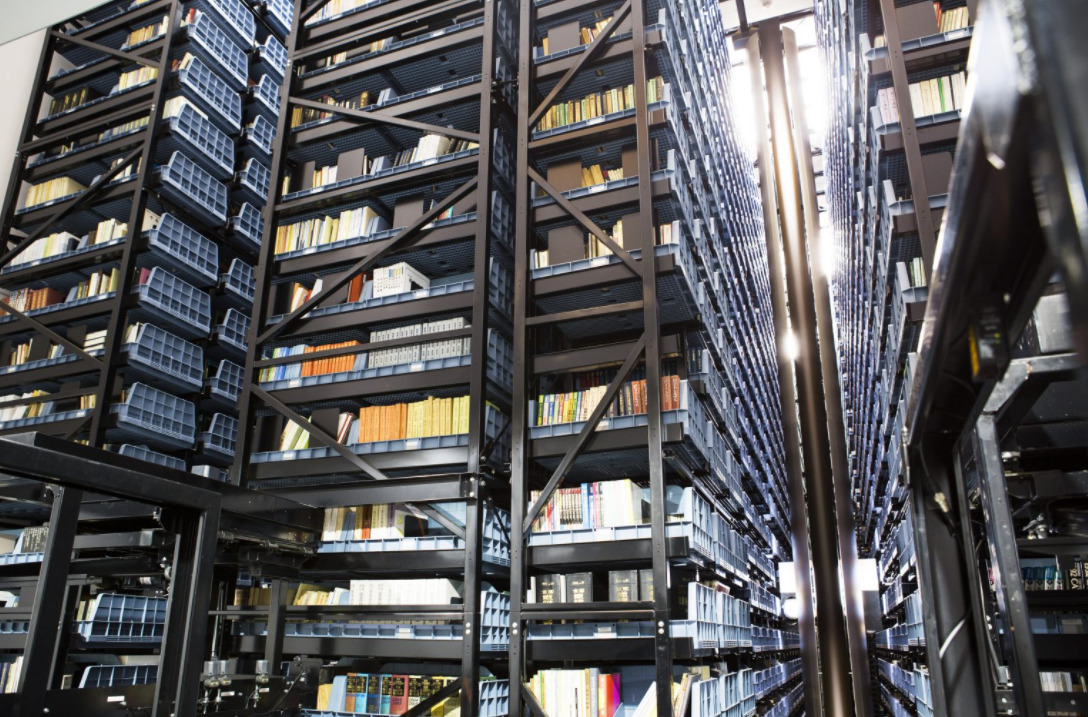
Image: Kyoto Prefectural Library HP
Except for the automated stacks, there are stacks that can be moved manually and fixed ones, and although it is called the second basement floor, the floor height is 6.2m, so it is 2 ~ 3 layers with a steel frame.
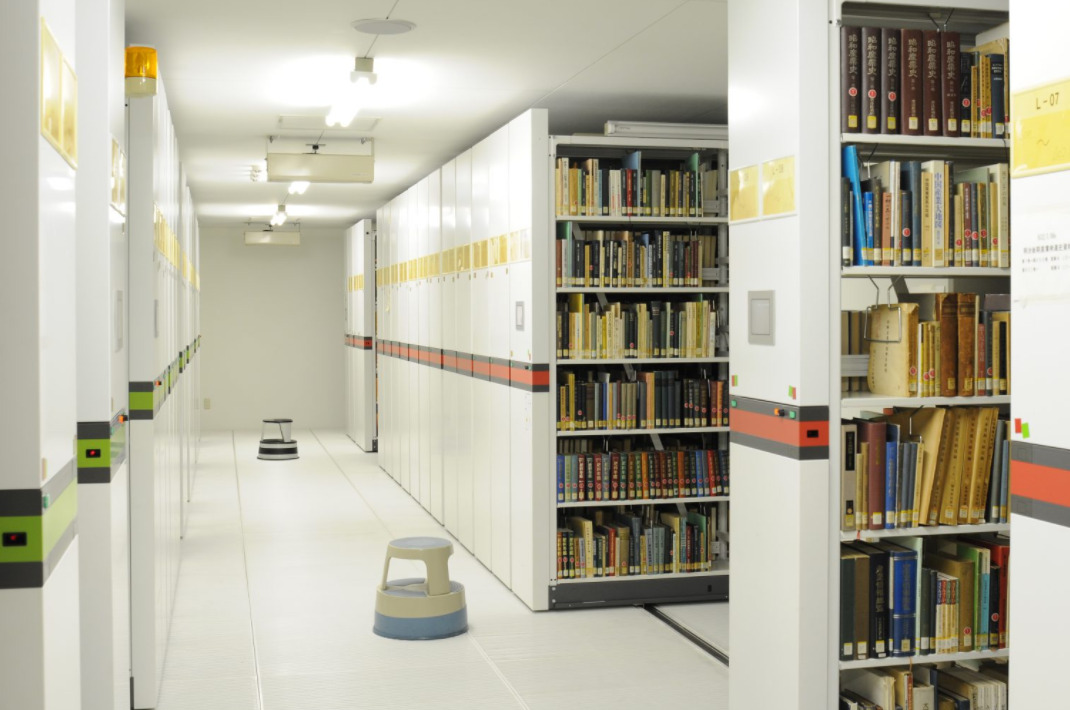
Image: Kyoto Prefectural Library HP
In addition to this, there was a rare library and treasured materials that could not be found on the Internet.
When it comes to 1,320,000 books, it takes a lifetime to read them. Libraries are a treasure trove of wisdom from our predecessors. I was reminded that life is short to learn.
Kyoto Prefectural Library and Ginkgo Biloba
Why is the logo of the Kyoto Prefectural Library a ginkgo leaf? I was curious, so I investigated.
Then, it is said that if you put a ginkgo leaf in a book, it will prevent paper fish (stains), so it seems that the design was made by crossing ginkgo leaves with the motif of an open book, and a student of Kyoto City Polytechnic University created a symbol mark and a Japanese logotype.
Investigating further
In the “Column: The Gingko Leaf Mark and the Ginkgo Tree at the Prefectural Library” published on p.3 of the Kyoto Prefectural Library’s “Library Kyoto” No. 39 ((2)), there is a description that “In general, ginkgo trees are said to ward off paper fish (stains) when the leaves are sandwiched between books” (Illustrated Encyclopedia of Flowers and Trees).
In contrast
In the 4th volume of the “Honbu Breakfast Book” ((3)) published in Genroku 8 (1695), “Kabe” (from the back of 25-chome), in the section on “Ginkgo”, the reason for sandwiching ginkgo leaves in the book is described as follows.
In Japan, new leaves of ginkgo biloba have been stuck in books for a long time to repel insects. I think the reason is that they look very similar. However, while the leaves have a scent that repels insects, the leaves of the ginkgo biloba do not, so it is not clear why they are pinched.
I spent a lot of time researching it, but in the end, I didn’t really know why, but the result was that the design was a student at Kyoto City University of Technology.

